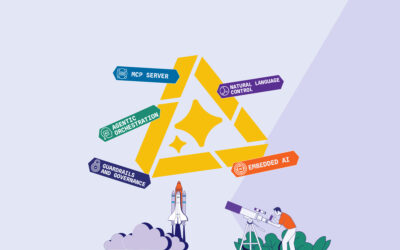Few dispute that purchasing life insurance still lags behind other customer experiences. In fact, according to The 2020 Insurer Compass report, less than 60% of life insurance professionals rate the acquisition and onboarding experience as average, at best, and just 1% believe it’s excellent.
Although the survey substantiates what our industry already suspected, what’s important is understanding what contributes to disappointing customer experiences and how to change course. In this blog, we’ll tackle both.
Why life insurance customer experiences don’t measure up
In a global economy teaming with customer-centricity, the expectations for delivering individualized life insurance coverages and experiences have never been higher. However, three key challenges continue holding traditional insurers back.
- Insurer-focused processes and products. Due to legacy core systems’ limitations, incumbent insurers have built their infrastructure and experiences around antiquated processes. This forces customers and distributors to do business your way, rather than the way they prefer.
- Excessive complexity. At its core, life insurance is simple: customers purchase coverage and, if they die, the insurer pays. However, layers of complexity have been added to protect insurers from excessive risk. As a result, consumers find purchasing life insurance baffling, reducing the number of individuals willing to do so while also creating market opportunities for upstarts who make it quick and easy.
- Insufficient data collection and utilization. As most insurers are unable to collect or analyze personalized qualification questions, the industry relies on general information such as age, gender, tobacco use, parental mortality, etc. Absent are specific questions around lifestyle and health practices. What’s more, insurers make redundant requests for information, such as requiring a blood sample even though a consumer recently had a blood test at their annual wellness exam.
How insurers can fix what’s broken
As the flood of insurtechs entering the life market demonstrates, it’s possible to provide customer-centric products, improve experiences, and address risk simultaneously. To get off the current treadmill, traditional insurers can apply the following lessons from how insurtechs approach our market.
Replace multi-year transformations with rapid product introductions. Yesterday’s extended modernizations just can’t keep up with our rapidly changing marketplace. By the time you complete a resource-intensive transformation, opportunities you sought to capture have passed you by. That’s why insurtechs design highly targeted products that enable product launches in a few weeks and then rapidly improving them based on market feedback. This slashes time to value for realizing profitability while also delivering products consumers are looking for.
Focus on the journey, not the product. Contemporary customers and distributors are gravitating toward life insurance experiences that align with the way they transact business day-to-day. This means designing personalized, customer-centric products and processes that help people meet their goals. It also serves as an incentive for consumers to become policyholders and for distributors to bring you the best risks.
Individualize pricing by enriching data. Gathering data on exercise, nutrition, and medication regimens, along with monitoring compliance, are part of the next wave in using external data to devise highly individualized underwriting and pricing. Leading insurers are already exploring the advantages of analyzing this “vitality data” to attract and incentivize policyholders while reducing their own risk.
Adopt coretech to innovate and operate like an insurtech
Supplying personalized products and engaging experiences requires an agile, flexible, and open technology platform. Legacy platforms, including so-called modern legacy solutions designed before the mobile revolution, just can’t provide the speed, interconnectivity, and scalability you need for mirroring the successful insurtech metaphor.
A coretech platform from EIS provides more than a thousand open APIs for interconnecting external data sources, as well as intuitive tools that enable testing, learning, and iterating like an insurtech. Advanced coretech solutions also include AI-enabled automation and scalability capabilities for evolving the platform to unify your previously disparate systems across all of your business lines.
In other words, a coretech solution frees you from building products around your technology. Instead, coretech enables you to adjust your core systems in response to individual needs, whether they’re a broker, agent, or consumer.
For more on this topic, check out the recent webinar, Life Insurance Reimagined: Transforming Underwriting and Onboarding.




